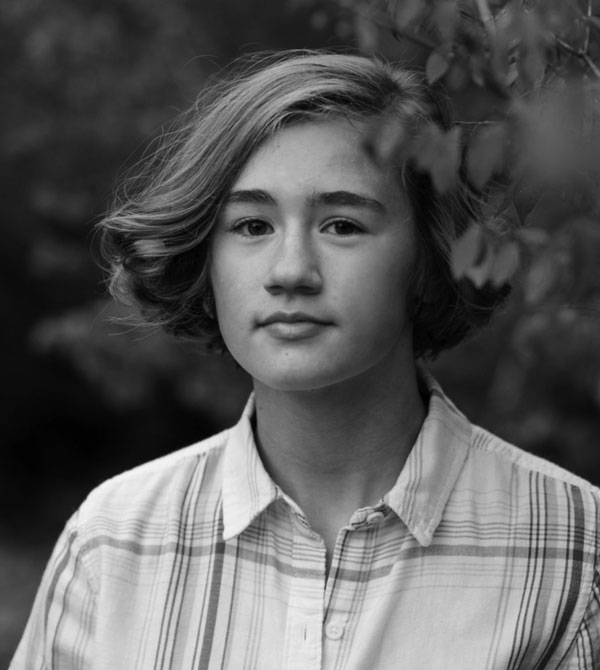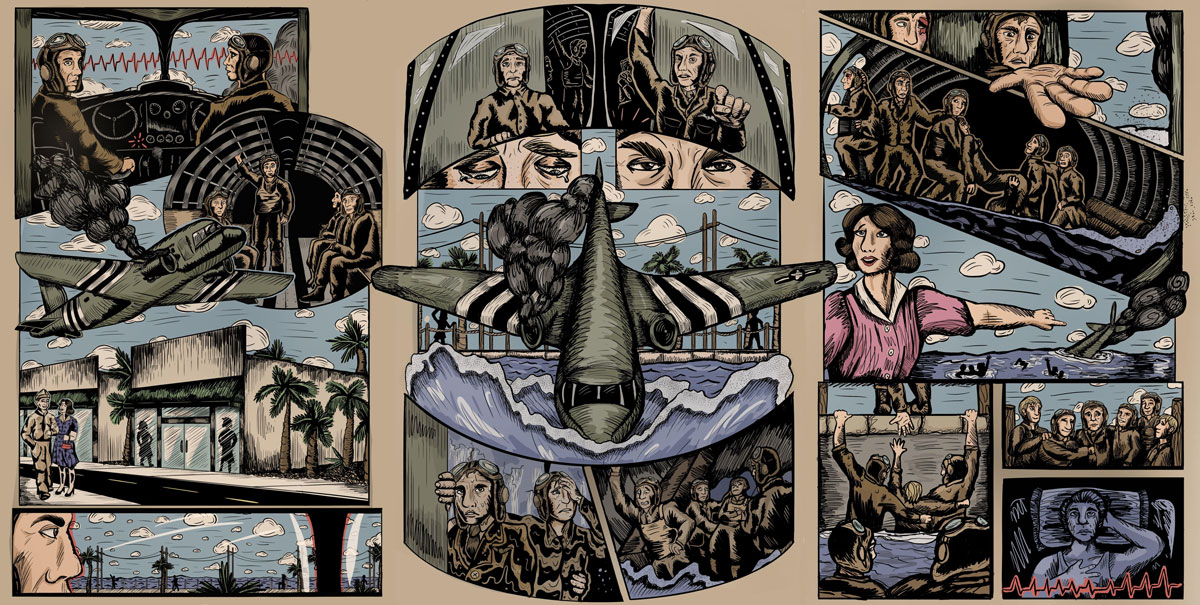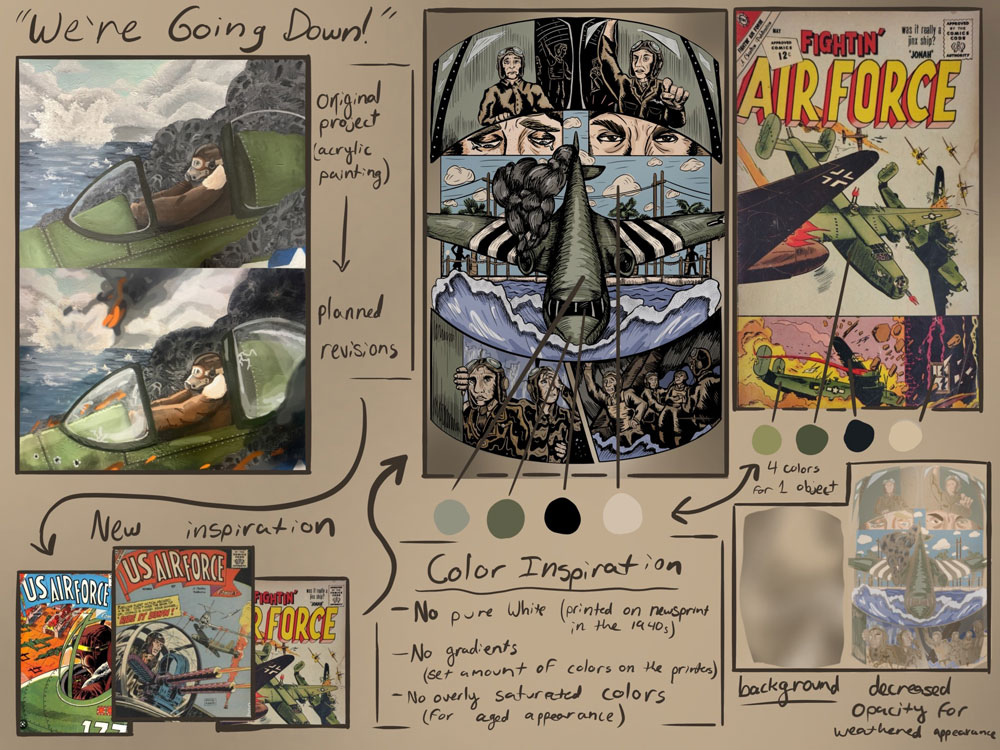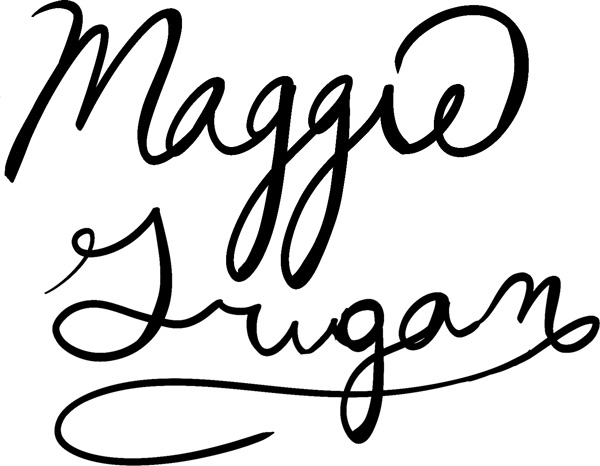

AP 2-D
Washington High School|Washington, Illinois
Maggie
Grugan


“We’re Going Down," Dimensions: 18” x 36”|Materials: “We’re Going Down!” Digital Illustration on Tablet|Processes: Hatching and styled linework to mirror 1940s comic style. Muted coloration to match newsprint comics|Idea(s): We're Going Down!" Inspired by a true story. Lasting effects and anxious memories of a wartime near-death experience.|Curatorial Note: Beautiful, unique, and well-constructed composition.
Student statement (TRANSCRIPT)
Student statement (TRANSCRIPT)
“We’re Going Down” is portrayed in a World War II-era military comic book style. I sought to display the long-lasting effects of near-death trauma through a true story from my great-grandpa, Sidney. Who served in the Air Corps and military in the late 1930s and early 1940s. While I never knew my great-grandfather, I was intrigued by his experiences, searching through personal items from the war and his service record, which was detailed with photos and notes. It invoked questions that I chose to approach in my artwork. I thought about my great grandma Martha and the expectations put upon her during this time in my piece “Do Your Part,” along with loss, scars, morals, and separation. However, “We’re Going Down” carried a lot of weight as it detailed the events of a true story.
During a flight exercise on a sunny Florida afternoon, a C47 troop transport aircraft was disabled mid-flight. The six men inside chose to pilot the plane into the ocean to avoid civilian casualties. The aircraft plummeted into the ocean, and all the men were able to escape with minor injuries.
Designing a dramatic composition was one of the piece's most fun elements, along with studying the style of 1940s comic books. The most challenging part of developing the piece was rendering such a complex style. It took nearly 50 hours of digital drawing to complete the piece. Initially, I envisioned the piece as an acrylic painting, but I scrapped the idea and approached something new. The encouragement given to me by my teachers and peers during critique to revise and approach the concept differently inspired the final product.
If I could go back to one year before my AP Art and Design journey began and tell my past self about what I’d be focusing on for my investigation, I wouldn’t believe it. My portfolio focused on the deviations from everyday life that occurred during the era of World War II. I sought one thing from my AP Art and Design journey: to push myself as an artist and explore things outside of my comfort zone. Looking back on it, I wouldn’t change a thing. I was able to learn about my family and history. I could look at a different historical era and draw inspiration from it. I attempted to look at life through a different lens and feel for the forgotten trauma of many veterans. If I had any advice to give AP Art and Design students, it would be to push yourself. Step outside of your comfort zone and explore something new. In the long run, you can pick up new strategies and points of view that you can utilize for the rest of your life, whether within your artwork or pushing yourself in any aspect of your future.
Student statement
Student statement
Sustained lnvestigation, Materials: Sculpey, fabric, pencil, wire, beads, acrylic paint, pool noodle, embroidery thread, paper.|Process(es): I created a skeleton out of pencils, tape, and wires, and then added mass with Sculpey.


We're Going Down!” Inspired by a true story. Lasting effects and anxious memories of a wartime near-death experience.
Teacher statement
Teacher statement

Jayme Banzhoff
My idea and philosophy of teaching AP Art and Design is to actively engage students by fostering a positive student-centered environment, cultivating relationships, and encouraging social and personal expression. In my AP Art and Design class, students give input and receive feedback from each other often, not only with critiques but also through an informal conversation where a student requests feedback from the “Hive,” the collective opinion of my class. I also encourage feedback from the other art teachers in my department so students hear multiple suggestions and viewpoints to make the most informed decisions. I strive to have an open dialogue about what is working and not working and to focus on the artmaking process. In AP Art and Design, my students focus on the process and progress, not perfection. They are encouraged to discuss, rework, and try again. “We’re Going Down!” is an excellent example of how returning to a piece that wasn’t quite working and trying again can create amazing results.
I strive for my students to engage and observe the world around them and translate that knowledge by actively participating in their stories through developing technical skills and artistic expression. Maggie’s artwork portrays how personal stories and family history can catalyze an investigation. The story of her great-grandfather led her to research deeper into the culture, effects, and propaganda of World War II and make connections with our current culture.
I advise AP Art and Design teachers to take advantage of all available resources, attend AP workshops, and apply to be a reader. Encourage your students to take advantage of opportunities, such as local art shows, mentor programs, and collaborations. So many resources are out there to grow your teaching practice and process.

Maggie Grugan





